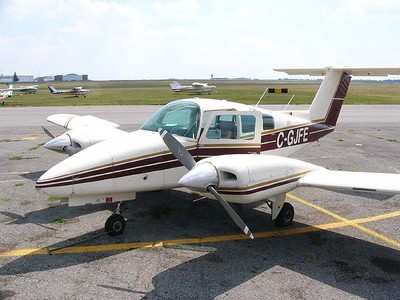Thu, Apr 22, 2021
AD 2021-08-06 Requires Magnetic Particle Inspections Of The MLG “A” Frame Assemblies
The FAA is superseding Airworthiness Directive (AD) 97-06-10 for certain Raytheon Aircraft Company (type certificate now held by Textron Aviation Inc. (Textron)) Model 76 airplanes. AD 97-06-10 required repetitively inspecting the main landing gear (MLG) “A” frame assemblies for cracks and replacing any cracked assembly.

Since the FAA issued AD 97-06-10, the replacement parts have also experienced failure due to cracking. This AD requires magnetic particle inspections of the MLG “A” frame assemblies for cracks and replacement of the affected parts if necessary. The FAA is issuing this AD to address the unsafe condition on these products. This AD is effective May 25, 2021.
Supplementary Information: The FAA issued a notice of proposed rulemaking (NPRM) to amend 14 CFR part 39 to supersede AD 97-06-10, Amendment 39-9967 (62 FR 12949, March 19, 1997) (AD 97-06-10). AD 97-06-10 applied to Raytheon Aircraft Company (type certificate now held by Textron) Model 76 airplanes, serial numbers ME-1 through ME-437 that do not have both a part number (P/N) 105-810023-75 (left) and P/N 105-810023-76 (right) MLG “A” frame assembly installed. The NPRM published in the Federal Register on December 14, 2020 (85 FR 80693).
AD 97-06-10 required repetitive visual and dye penetrant inspections of the MLG “A” frame assemblies for cracks and replacement of any assembly found cracked. AD 97-06-10 did not apply to Model 76 airplanes with an improved design MLG “A” frame assembly (P/N 105-810023-75 and P/N 105-810023-76) installed on both the left and right MLG. The FAA issued AD 97-06-10 to prevent MLG failure because of a cracked “A” frame assembly, which could result in loss of control of the airplane during landing.
The NPRM was prompted by reports of P/N 105-810023-75 and P/N 105-810023-76 “A” frame assemblies failing due to fatigue cracking, resulting in damage to the propeller and outboard wing area. The FAA determined that the visual and dye penetrant inspections were not adequately detecting cracks in the MLG “A” frame assemblies, because some of the failed parts had been subjected to visual and dye penetrant inspections within 100 hours before the failure.
In the NPRM, the FAA proposed to require repetitive magnetic particle inspections, which provide quicker results (after testing setup) with improved accuracy. Also, the NPRM reflected that the type certificate for the Model 76 airplane had been transferred from Raytheon to Textron, and that Textron designed new replacement parts, P/Ns 105-810023-0083 (left) and 105-810023-0084 (right), that were not subject to the proposed repetitive magnetic particle inspections. However, the newly designed MLG assemblies are still subject to the repetitive inspections specified in the maintenance manual.
More News
Ground Stop (GS) The GS is a process that requires aircraft that meet a specific criteria to remain on the ground. The criteria may be airport specific, airspace specific, or equip>[...]
Aero Linx: Australian Transport Safety Bureau (ATSB) The Australian Transport Safety Bureau (ATSB) improves safety and public confidence in aviation, marine and rail transport thro>[...]
“The Palo Alto stopover confirmed—yet again—that flight schools and aero-clubs are no longer just curious about electric training; they are ready to buy. In just >[...]
Pilot’s Failure To Maintain Clearance From The Water While Flying At A Low Altitude Analysis: The flight of two airplanes was in cruise flight on a north heading about 50 ft >[...]
Also: 48th Annual Air Race Classic, Hot Air Balloon Fire, FAA v Banning 100LL, Complete Remote Pilot The news Piper PA-18 Super Cub owners have been waiting for has finally arrived>[...]
 ANN's Daily Aero-Term (06.30.25): Ground Stop (GS)
ANN's Daily Aero-Term (06.30.25): Ground Stop (GS) ANN's Daily Aero-Linx (06.30.25)
ANN's Daily Aero-Linx (06.30.25) Aero-News: Quote of the Day (06.30.25)
Aero-News: Quote of the Day (06.30.25) NTSB Final Report: ICON A5
NTSB Final Report: ICON A5 Airborne Affordable Flyers 06.26.25: PA18 Upgrades, Delta Force, Rhinebeck
Airborne Affordable Flyers 06.26.25: PA18 Upgrades, Delta Force, Rhinebeck



